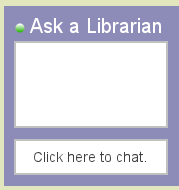Information Update - Spring 1998
Some Enhancements to FirstSearch
- Future Shock is yesterday's news. Nowhere is this more evident than in the evolution of electronic indexes. In the Fall, 1997, issue of Information Update, Betsey Moylan wrote an article entitled "Library Acquires New Database Services" about the evolution of indexes from standalone CD workstations to a LAN CD network accessible from home or office to web-based indexes and full-text journals. The Weinberg Memorial Library instituted an extensive User Instruction program to acquaint users with our new services and to help researchers derive the maximum benefit from the plethora of choices which now delight or confound them. In the distant past (one or two years ago) new releases were much heralded and anticipated. News releases and spec sheets would coach us as to what we could expect and provide as with opportunities to consider impacts and implications. In the current web-based environment, the notion of a "release" is quaint. Databases constantly evolve. If the changes are good, it is an enhancement; if they are not, it's tampering. Happily, we can report that there have been several enhancements to the FirstSearch collection of databases.
- The first enhancement is the display of subject area categories on the opening screen. The user chooses a category to get the list of related databases. FirstSearch is a product of OCLC, Online Computer Library Center. As part of the cataloging process, libraries add a three letter symbol to the record for materials cataloged using the OCLC database. A nice feature of FirstSearch databases is that these holdings symbols are displayed so that users can determine which libraries own materials of interest. OCLC calls this "integrated topic area and database selection screens with database summary tables." The databases produced by OCLC,WorldCat index for books, NetFirst index of the Internet and Article1st document delivery index are displayed in each category.
- A second enhancement is the addition of "related subjects" to several of the FirstSearch databases. The University of Scranton has access to 70 of the 76 databases. FirstSearch display's up to 50 subject terms, in order by their frequency of occurrence, in groups of 20 with an option to display more. It is important to note that these terms relate to the fast search performed and not to the original conception of the topic. The user can select up to three terms from this list to add to a search, limiting the search by the addition of these subjects.
- The third enhancement is the Browse Index. This keyword table indicates the number of records that contain a word. It can be used to verify the occurrence of a term, to check spelling or to substitute a term for the one the user originally entered as a search term.
- Here are some tips for using FirstSearch:
- - Use the icons on the FirstSearch screen rather than the browser buttons (BACK, HISTORY, etc.) to begin a new search or return to your list of results. Using the browser buttons can result in the loss of your search.
- - The History button will display, your previous searches and give you options for using Boolean operators (and, or, not) to combine these searches.
- - Search results are listed in the order they were added to the databases, i.e. date of addition and not date of publication.
- - You can tag up to 20 records to display or print as a group. Save the tags at the end of each screen of 10 records or the tags will be lost when you go to the next screen. The numbers of the saved records are displayed in the upper right corner.
- - The Help button display's details on the features described in this article. Help also includes an index to the databases that describes the subject contents, frequency of updates. search tips and advanced command-type searching features.
- By licensing agreement, access to FirstSearch databases is restricted to University of Scranton students, faculty and staff. Alumni and Friends of the Weinberg Memorial Library may register at the Reference Desk to secure access. The application process takes approximately three days.
- Many of the web-based databases provide feedback mechanisms. Producers respond to suggestions and implement enhancements. By the time you read this, there may be new features!
Bonnie Strohl

